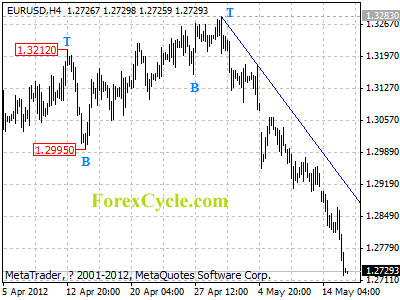By Amy Calistri, GlobalDividends.com
Most of the people reading today’s issue don’t have a million dollars to invest.
It doesn’t matter. What I’m going to show you applies no matter how much money you have to invest — whether it’s $100 or $100 million.
I’ve simply used $1 million as an example because it’s a nice round number… and one that people often associate with wealth.
But there is a sad truth about a million dollars. Even that heady amount wouldn’t earn you much in regular income — if you put it to work in the “traditional” ways…
$900. That’s the most you will get each month if you put that $1 million into a 1-year CD, which, according to BankRate.com, is yielding just a shade above 1.0%. For comparison, the average Social Security check is $1,230 per month. In other words, you’d earn more from Social Security than you would from $1 million.
It’s a similar story with a number of other investments…
|
The sad truth is that even with an enormous amount of money, your options for income in “traditional” investments don’t offer much to get excited about. But there is some good news you’ll also want to know…
Specifically, as I’ve told you the past few weeks, right now I’m earning more than $16,000 a year (or more than $1,300 a month)… and I’m doing it with a portfolio currently worth $250,000. If my portfolio were worth $1 million — four times as much — I’d be earning $72,000 per year. That’s considerably more than you can earn from Treasuries or CDs or the broader market. Take a look…
I’m not showing you this to brag about what I’m doing. Instead, I’m convinced that with returns from traditional income investments paying so little… a recent recession hurting investment accounts… and a Social Security system that simply doesn’t cover most people’s living expenses… it’s more important than ever to know about this way of investing — which I call my “Daily Paycheck” strategy.
The goal of my “Daily Paycheck” strategy is to collect a dividend payment for everyday of the year. The beauty is that it requires little fuss.
My portfolio includes master limited partnerships (MLPs), closed-end funds, blue-chips, exchange-traded bonds, and a number of other asset classes; all of which pay dividends, some even monthly rather than quarterly. In total, I’m earning an average yield of 7.2% on my portfolio.
How Much Can You Earn Each Year? | |
Portfolio Size: | |
| $10,000 | $720 |
| $25,000 | $1,800 |
| $50,000 | $3,600 |
| $100,000 | $7,200 |
| $200,000 | $14,400 |
| $500,000 | $36,000 |
| $1,000,000 | $72,000 |
*Numbers based on 7.2% average yield (the current average yield of my portfolio). All investing carries risk and no results are guaranteed. The figures above will also be subject to taxes and commissions | |
You can see how much income that would mean for your portfolio by simply finding your portfolio size in the table to the right…
Of course, there’s a big difference between holding a portfolio of dividend payers versus putting your money in a CD, Treasury, or even a broad index fund that tracks the S&P. I’ll be the first to tell you that there’s no safer investment than a Treasury bond. But you might be surprised how stable a “Daily Paycheck” portfolio can be.
Let me give you one example…
You likely remember the market sell-off that occurred back in August 2011. All the headlines were dour… investors all around the world were anxious about a potential default by Greece… high oil prices… budget problems in the United States and elsewhere… and soaring unemployment.
In the month of August alone, the S&P 500 lost 5.7%… a major move for one of the world’s most recognized indices.
My portfolio? Despite all the turmoil, I saw my account fall just 1.0% during the month. That’s just one-sixth the amount the broader market fell.
That’s not to say that my portfolio will always hold up as well, but I do like my odds. After all, the last time I checked, the S&P wasn’t throwing off thousands of dollars in income each month, helping to smooth out your returns no matter which way the market moves.
And there’s one more thing you can do if you’re still worried about risk that will still beat the income you earn from Treasuries or CDs.
I’ll continue with my example of $1 million (but remember, all these results are fully scalable depending on your portfolio size)…
Say you put half your investment — $500,000 — in a 5-year CD because you were worried about safety. From that money, you’d earn $8,750 a year. Then you can take the remainder and follow the “Daily Paycheck” strategy, which would generate an additional $36,000, based on current yields. Together, you’d generate nearly $45,000 per year — 155% more than you can get by investing all $1 million in a 5-year CD.
Now, there’s plenty more to share about my “Daily Paycheck” strategy… and I don’t have the space to include it all here. Instead, I’ve put together a special presentation that outlines how I’m earning this $1,357 per month income stream (and the brokerage statement to prove it). To view this free presentation — including a few high-yield picks to start your own “Daily Paycheck” portfolio — you can visit this link.
Always searching for your next paycheck,

Amy Calistri
Chief Investment Strategist — The Daily Paycheck
P.S. — Don’t miss a single issue! Add our address, Research@DividendOpportunities.com, to your Address Book or Safe List. For instructions, go here.








